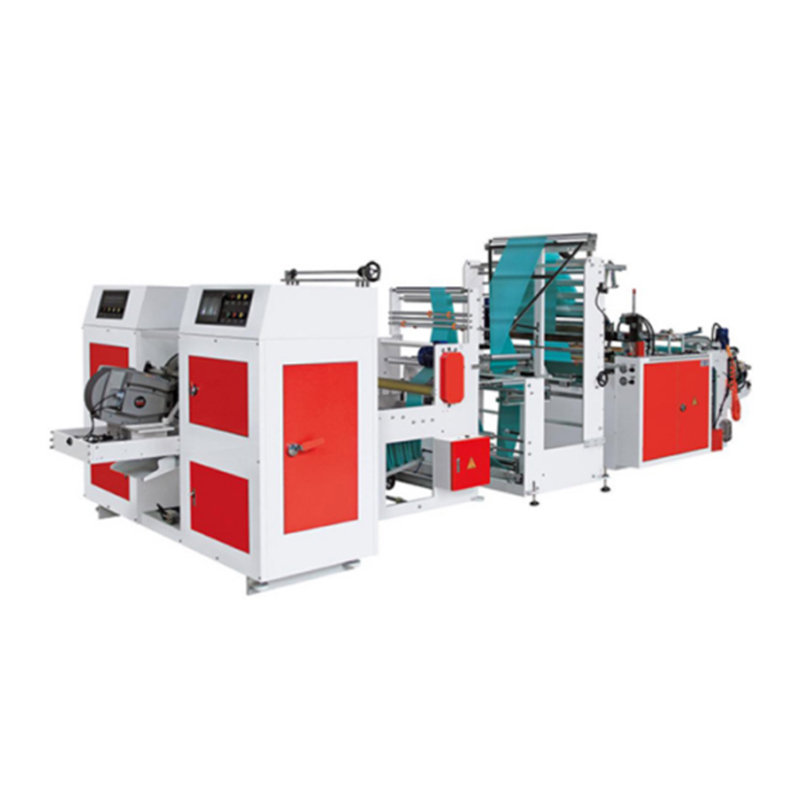Rubbish Bag Making Machine Running Costs Per Hour?
 By Admin
By Admin
When you Google “Rubbish Bag Making Machine price,” the quoted figure is only the down-payment; the number that really shapes your annual profit is the hourly running cost. Below, we break that hidden number into six measurable slices, show how they add up to a transparent US $8.40–$10.20 per production hour on a mid-range 45-kg/h extrusion-type machine, and give four levers you can pull today to push the same line below US $7.00.
Electricity: the 800 kg gorilla
A 55-mm screw, 15-kW main motor plus 8-kW heaters needs 19 kWh at 80 % load. With industrial power averaging US $0.12 kWh−1 in South-East Asia and US $0.18 in the EU, expect US $2.28–$3.42 each hour. Switching to a modern inverter drive reduces motor draw by 12 %, saving roughly 30 cents.
Raw resin: where every gram counts
Virgin LDPE pellet prices have hovered between US $1.25 kg−1 and US $1.45 kg−1 in 2024. A 45-kg/h throughput therefore consumes US $56.25–$65.25 worth of resin in 60 minutes—yet this is a pass-through cost if you sell bags by weight. What actually stays inside your P&L is scrap. A well-tuned Rubbish Bag Making Machine keeps edge-trim below 2 %, so the real “loss” is only US $1.10–$1.30 h−1. If you add 30 % recycled blend, the scrap value drops another 8 %.
Labor: one operator, many tasks
One skilled worker can supervise extrusion, printing, and sealing simultaneously. Median factory wage in Vietnam is US $2.10 h−1; in Eastern Europe it is US $4.80. Include 25 % payroll overheads and the labor slice becomes US $2.60–$6.00. Automating roll changeover with an auto-winder cuts overtime by 0.4 h shift−1, worth US $1.60 daily.
Auxiliary consumables
Master-batch, anti-block, and packing tape look trivial, yet add roughly US $0.45 for every hour of 45 kg production. Stretch film for palletizing contributes another US $0.18. Together they nibble 4 % off your margin if ignored.

Wear-and-spare parts
Expect to replace heater bands every 4,000 h, blown film die inserts every 8,000 h, and a screw every 20,000 h. Amortised over machine life, parts cost US $0.70 h−1. Skipping preventive maintenance may save 30 cents today but risks a US $4.00/h drop in output when the screw surges.
Floor space & capital cost
A 400 m² workshop at US $4 m−2 month−1 plus a US $120,000 machine depreciated over ten years adds another implicit US $1.10 production hour. You cannot eliminate this, but higher machine utilization—two 8-hour shifts instead of one—halves the charge per bag.
Add the six slices together and you land at US $8.40–$10.20 for every 60 minutes your Rubbish Bag Making Machine is turning. That translates to 0.19–0.23 cents per 50 × 60 cm 15-micron bag—small, but decisive in a tender where the buyer’s target is 0.55 cents delivered.
Four levers to drive the figure below US $7.00
A. Install a 20 % recycled blend feeding system; energy and resin scrap both fall.
B. Retrofit an IBC (internal bubble cooling) package; raise output to 55 kg/h without extra labor.
C. Move to off-peak electricity tariffs; 30 % of daily hours at −20 % price shaves 12 cents.
D. Sign a resin forward contract; locking in three months of LDPE at spot minus 4 % saved one Indonesian converter US $1.05 h−1 during Q2-2024.
Take-away
Before you sign the purchase order, ask the supplier not only for kilowatt ratings but for a detailed “cost-per-hour” worksheet. Run it with local resin, labor, and power numbers; you will discover that the Rubbish Bag Making Machine with the low ticket price can easily become the expensive to keep humming, while a slightly pricier, energy-efficient model pays for itself in 14 months purely through lower running costs.




